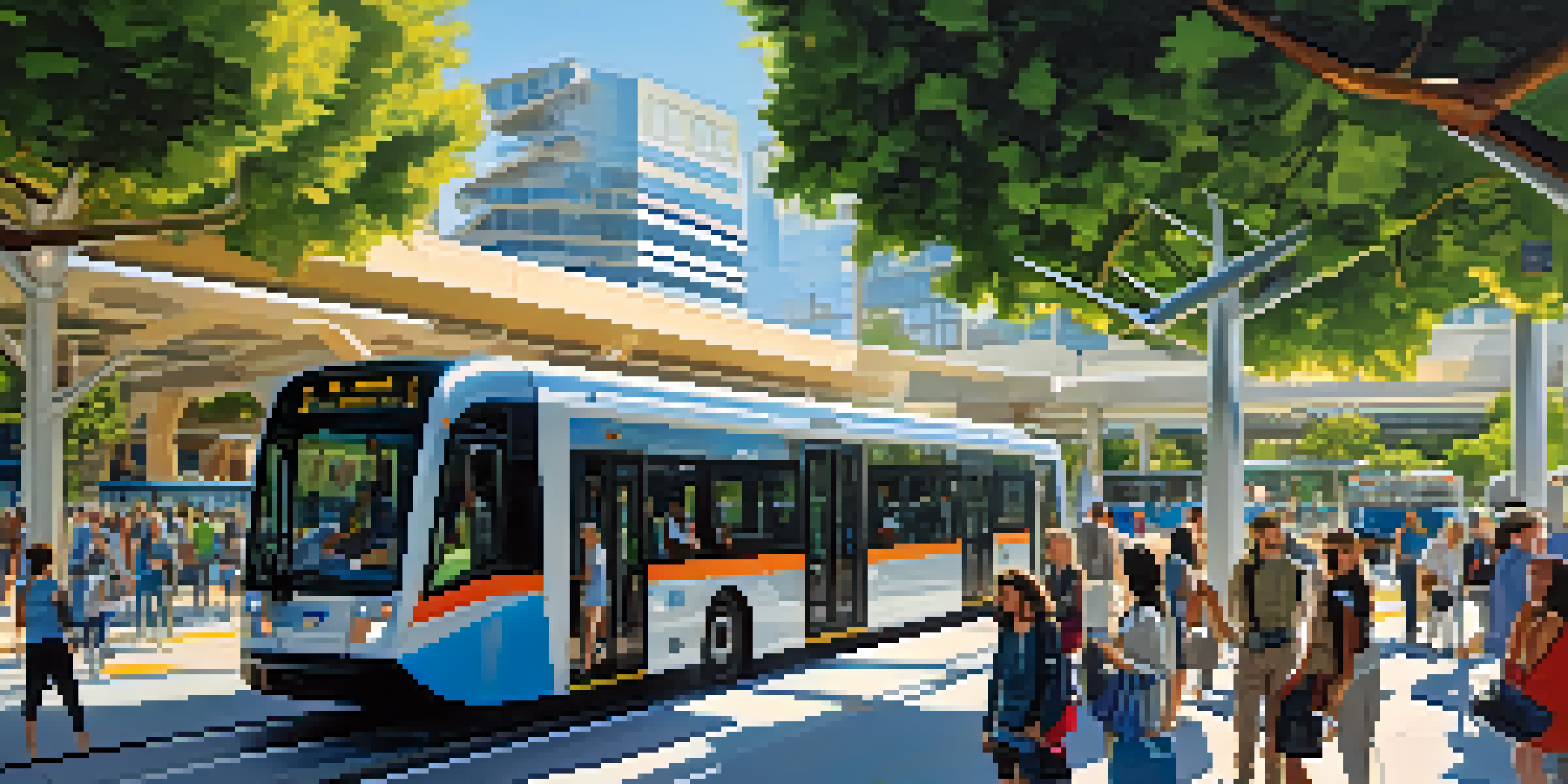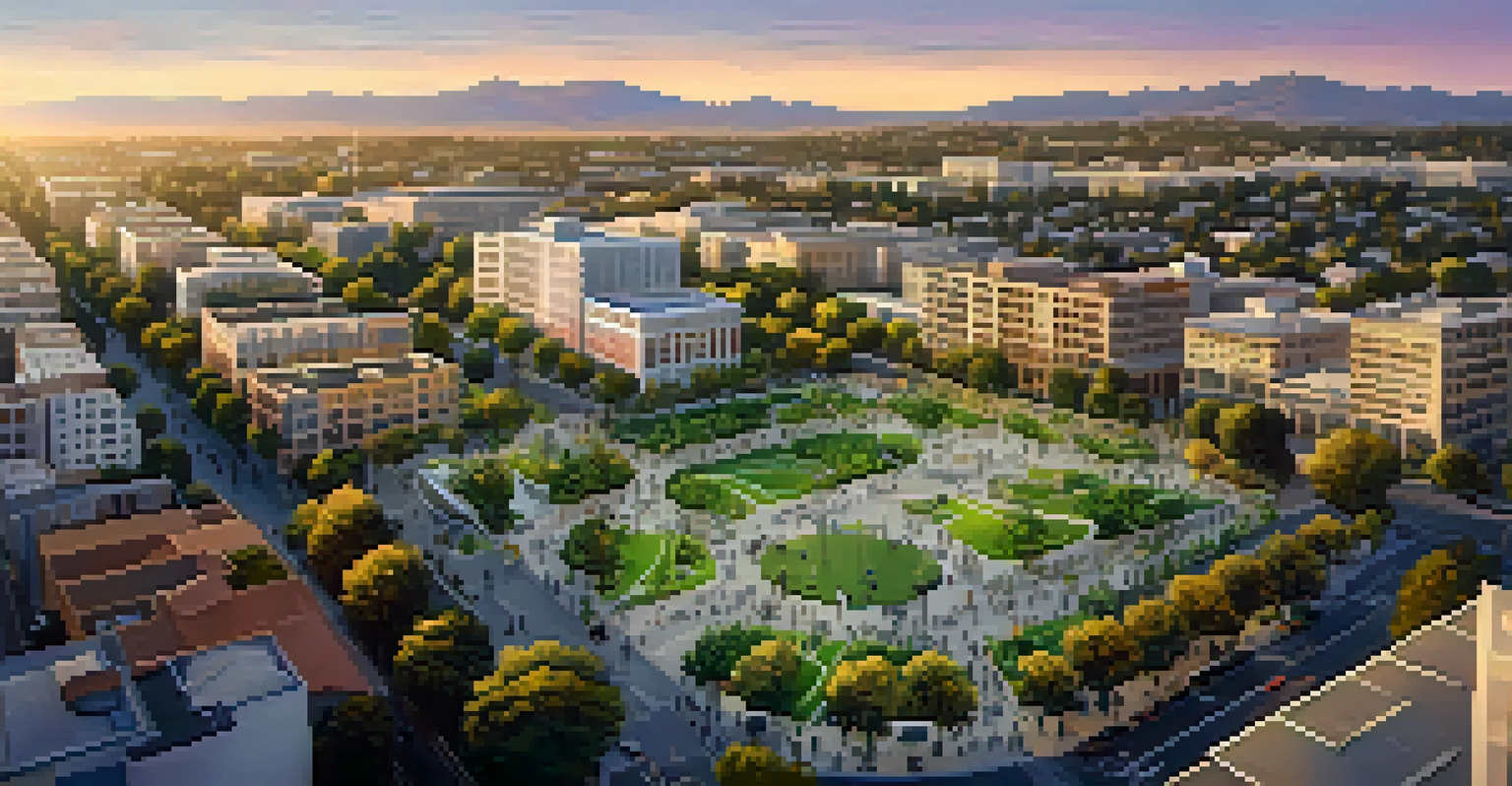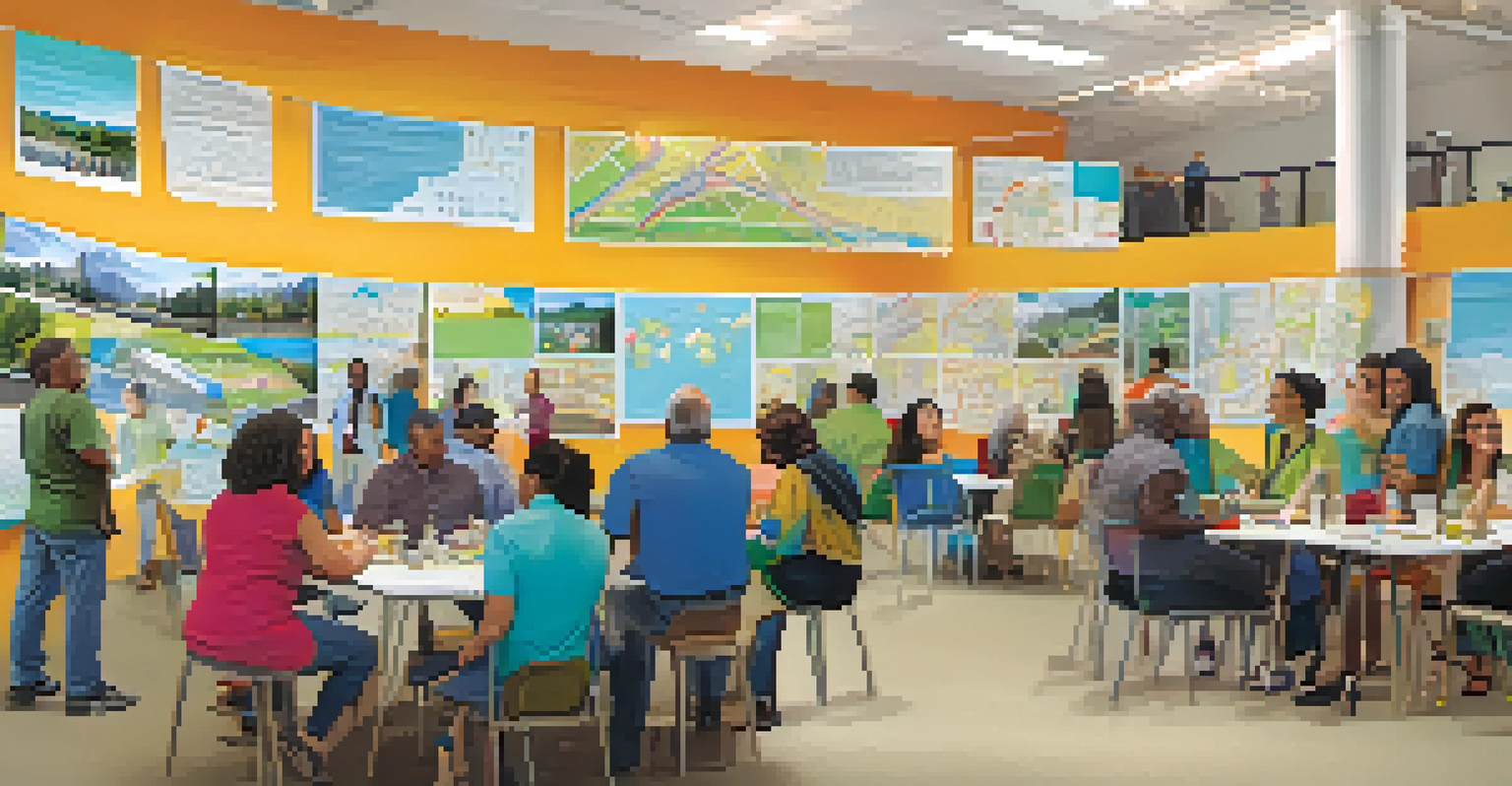San Jose's Growing Population: Public Transit Innovations Ahead

San Jose's Population Boom: A Brief Overview
San Jose has experienced significant population growth over the past decade, transforming it into one of California's most dynamic cities. With tech companies flocking to the area, the demand for housing and services has surged, drawing newcomers from all walks of life. This influx not only reshapes the city's demographics but also presents unique challenges in urban planning and infrastructure.
Public transportation is a lifeline for our communities, connecting people to jobs, education, and essential services.
As the population continues to rise, the need for efficient public transit becomes increasingly critical. Residents are seeking reliable transportation options that can accommodate their daily commutes while reducing traffic congestion. Consequently, city planners are now faced with the task of modernizing and expanding public transit systems to meet these demands.
In response to these challenges, San Jose’s local government is prioritizing innovative public transit solutions. By investing in new technologies and infrastructure improvements, they aim to create a transit system that is not only functional but also sustainable for future generations.
The Role of Public Transit in Urban Growth
Public transit is essential for urban growth, serving as the backbone of a city's mobility. A well-connected transit system can reduce dependence on personal vehicles, lowering traffic congestion and greenhouse gas emissions. In San Jose, enhancing public transit is seen as a vital step in fostering economic development and improving quality of life.

As more people move to San Jose, the city must accommodate their transportation needs. This means expanding bus routes, improving light rail services, and exploring options like bike-sharing programs. Each of these strategies not only addresses current demands but also prepares for future population increases.
San Jose's Population Growth
San Jose's rapid population increase is driving demand for improved public transit and urban infrastructure.
Moreover, a robust public transit system can help bridge the gap between different communities within San Jose. By ensuring that all neighborhoods have access to reliable transportation, the city promotes inclusivity and equal opportunities for all residents.
Innovative Technologies Shaping Transit Solutions
San Jose is at the forefront of adopting innovative technologies to enhance its public transit systems. Smart transit applications, for example, allow commuters to track buses and trains in real-time, making it easier to plan their journeys. These technological advancements not only improve user experience but also increase overall transit efficiency.
A robust public transit system is vital for economic development and improving the quality of life in our cities.
Additionally, the integration of electric buses is a significant step toward a more sustainable transit system. Electric buses reduce air pollution and operating costs, making them an attractive option for cities looking to modernize their fleets. San Jose has committed to transitioning to cleaner energy sources, aligning with broader environmental goals.
Furthermore, the city is exploring autonomous vehicle technology as a potential future solution for public transportation. While still in the early stages, the possibility of self-driving shuttles could revolutionize how residents navigate the city, providing a flexible and innovative transit option.
Investments in Infrastructure: A Necessity
To support its growing population, San Jose must invest heavily in transit infrastructure. This includes upgrading existing bus and rail systems, expanding service areas, and improving access to transit hubs. Such investments are crucial for creating a reliable and efficient public transport network that can keep pace with the city's expansion.
Moreover, the city is focusing on creating multi-modal transit stations that connect various forms of transportation, such as buses, trains, and bicycles. These hubs not only simplify commuting but also encourage the use of public transit over personal vehicles, contributing to reduced traffic congestion.
Innovative Transit Solutions
The city is adopting advanced technologies, such as smart transit apps and electric buses, to enhance public transportation.
Funding for these infrastructure projects often comes from a mix of local, state, and federal sources. Engaging the community in these discussions is essential to ensure that the transit solutions align with the needs of San Jose's diverse population.
Community Engagement in Transit Planning
Community engagement is a cornerstone of effective transit planning in San Jose. City officials are actively seeking input from residents to understand their needs and preferences regarding public transportation. This collaborative approach ensures that the solutions developed are practical and resonate with the community.
Public forums, surveys, and workshops provide platforms for residents to voice their opinions and share their experiences. This feedback loop not only fosters trust between the city and its residents but also leads to more informed decision-making in transit planning.
By involving the community in the process, San Jose can create a public transit system that is not only efficient but also reflective of the diverse population it serves. This inclusive approach empowers residents and strengthens the city's commitment to equitable urban development.
The Future of Public Transit in San Jose
Looking ahead, the future of public transit in San Jose appears promising, with numerous projects on the horizon. The city is committed to enhancing its transit systems to accommodate its growing population while prioritizing sustainability and innovation. As new technologies and infrastructure developments emerge, residents can expect a more connected and efficient transit experience.
In addition to traditional transit options, the city is exploring the integration of micro-mobility solutions, such as scooters and bike-sharing programs. These alternatives can complement existing public transit and provide residents with flexible transportation options for short trips.
Community Involvement in Planning
Engaging residents in transit planning ensures that the solutions reflect the diverse needs of the community.
Ultimately, the goal is to create a seamless transit network that encourages residents to choose public transportation. By prioritizing accessibility and convenience, San Jose aims to reduce congestion, improve air quality, and enhance the overall quality of life for its residents.
Conclusion: A Vision for Sustainable Transit
In conclusion, San Jose's growing population necessitates innovative solutions in public transit. As the city embraces new technologies and infrastructure investments, it is poised to create a sustainable transit system that meets the needs of its residents. Engaging the community in this process ensures that the solutions developed are relevant and effective.
By prioritizing public transit, San Jose not only addresses immediate transportation challenges but also lays the groundwork for a livable, connected city in the future. This vision of sustainable transit is crucial for fostering economic growth and enhancing the quality of life for all residents.

As San Jose continues to evolve, its commitment to innovative transit solutions will be a vital component of its urban landscape, ensuring that it remains a vibrant and accessible city for years to come.